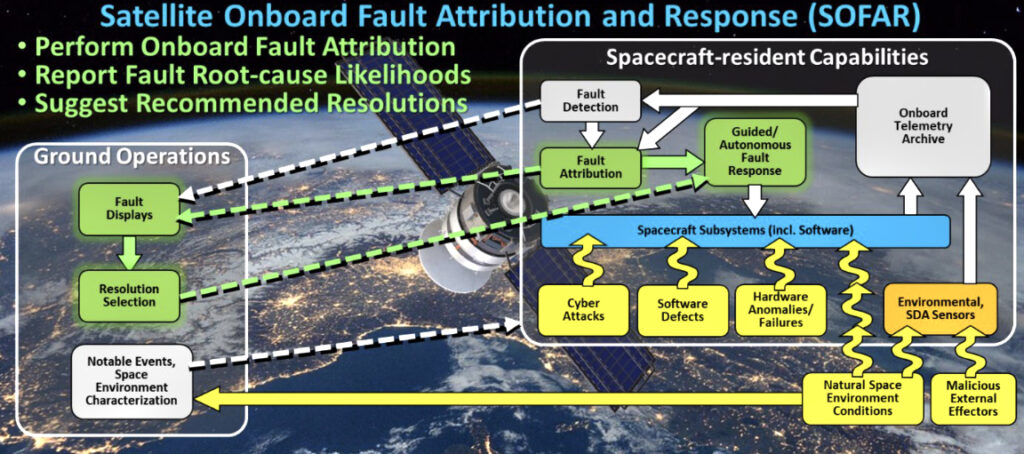
Orbit Logic has been awarded a Phase I Small Business Technology Transfer (STTR) contract sponsored by the Air Force Research Laboratory to develop the Satellite Onboard Fault Attribution and Response (SOFAR) solution.

The Space Telecommunications, Astronomy and Radiation (STAR) Laboratory in the Department of Aeronautics and Astronautics at the Massachusetts Institute of Technology is the company’s research collaborator.

SOFAR will attribute faults encountered in satellite systems to their possible causes. In many cases, clues embedded in telemetry data may be so sparse that no single explanation is possible to determine. In these situations, SOFAR will develop multiple hypotheses and the relative likelihood of each. These hypotheses can be delivered to the ground operations center to inform the operators, and can also be used by Orbit Logic’s onboard Autonomous Planning System (APS) to trigger/determine automated responses to mitigate the fault.
As shown in Figure 1 below, SOFAR will consume data from the hosting satellite bus, its sensors/payloads, and even remote sensors or platforms. Novel approaches developed by MIT will not just isolate the fault, but also attempt to identify its causation category, which can include: Space weather events; Application of physical or energetic effects to the platform; Failures, anomalies or degradation of the spacecraft’s hardware systems; Defects in the flight software that may emerge at unpredictable times or under unique conditions; or Cyber-attacks.

APS is a powerful technology that can be leveraged for autonomous planning in any domain. The breadth of its applications proves its flexibility; in addition to its use on this program for satellite fault management, Orbit Logic has used APS for the autonomous operation of heterogeneous constellations of Low Earth Orbit (LEO) satellites with DARPA and AFRL, heterogeneous teams of unmanned underwater/surface/aerial vehicles (UUVs/USVs/UAVs) with the Navy, heterogeneous swarms of rovers, satellites, and atmospheric vehicles for robotic Mars exploration, heterogeneous robotic swarms with astronauts-in-the-loop for Lunar exploration and mission-adaptive formation flying control of satellite clusters with NASA.
